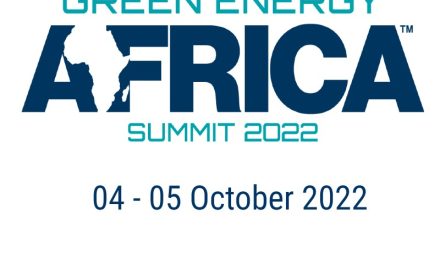
Mozambican airliner laid to rest
Driving force behind the Cowboy’s team, Heinz (Cowboy) Büttner (second from left) with site clearing partner Jan Vader of BCG Aircraft Recoveries (back), project coordinator, his wife Ulla (left), and the Director of the Namibian Aircraft Accident Investigation Division, Capt. Ericksson Nengola (right).Swakop team clears crash site and processes evidence
A Swakopmund compan Cowboy’s 4 x 4 truck transporting debris from site to the pre-sorting area where literally everything had to be sorted and labelled.y that accepts all sorts of weird instructions was instrumental in recovering and rehabilitating the crash site in Bwabwata National Park of the Air Mozambique airliner that crashed there at the end of last year.
Known under the moniker of its founder, Cowboy (Heinz) Büttner, Cowboy’s Trading & Rental Solutions are more typically involved in supplying camping and logistics for large crews. This way, it has established a reputation for keeping the film crews that regularly visit the desert, housed, fed and supplied.
Late in January this year, Jan Vader of BCG Aircraft Recoveries BV from the Netherlands contacted Cowboy’s Trading & Rental Solutions with a proposal to be the Namibian partner in clearing the crash site of LAM Mozambique TM470.
Cowboy Büttner could not resist the challenge. “Because Cowboy’s is a dynamic company with the logistical ability to set up a remote camp, and the workforce, expertise and equipment available to handle this type of challenge, Jan Vader started negotiations on behalf of BCG, the insurance brokers and the lawyers involved in the LAM Mozambique TM470 crash” he said.
Final permission had to be obtained from the Ministry of Environment and Tourism as the crash site is in a national park – Bwabwata. The go-ahead was given during February.
All operations and work procedures were under the jurisdiction of the Namibian Aircraft Accident Investigation Division in the Directorate of Civil Aviation in the Ministry of Works and Transport. The recovery project was headed by Captain Ericksson Nengola.
For Cowboy’s this was an exciting new challenge as the company had never received an instruction like this before. Cowboy (the man) said Cowboy’s (the company) was unsure of the length of the project because of the weather. Being the rain season, it could have a major impact on the overall progress, and the rate at which the site could be accessed and processed. All planning and logistics had to be done with this in mind.
Early in March they set out with a 25-man team to establish the base camp at Pica Pau, followed by the secondary camp at the actual crash site some 28 km north-east of the base camp.
The base camp could only be described as luxurious compared to what Jeff Anderson, the representative from BCG Aircraft Recoveries, expected to find in the middle of the African bush. The base camp had to house the main body of the crew providing sleeping accommodation, showers and ablution facilities and an eatery offering delicious meals almost like a 5-star hotel.
Each day was an adventure in itself as the Kavango flood plains rose and made 4×4 access to the crash site a constant challenge.
The crash site was demarcated with an extended grid pattern to ensure that each section is individually cleared, and later rehabilitated to its original state.
Büttner said the “rake teams “ had to be guided and monitored carefully to separate the aircraft components. The surface was raked systematically to ensure that the proper bagging and labelling of debris were executed strictly according to procedure as determined by the International Civil Aviation Organisation. These bags were all registered by the BCG team. All registered bags, portions of the wreckage and other debris were translocated to a secure, airtight storage facility for the formal investigation which follows.
The Director of the Namibian Aircraft Accident Investigation Division, Captain Ericksson Nengola expressed his satisfaction with the professionalism of the Cowboy’s team. He was impressed with the high standards displayed during the recovery phase noting that there was even a decontamination tank available at the crash site to prevent any carbon fibre contamination.
An official of the Ministry of Environment and Tourism, the park warden Mr Maketo also approved of the way the clearing and rehabilitation of both the crash site and the base camp were done. Said Büttner, “it was impressive that every last pop rivet had to be collected and all areas raked, adding that even the tracks from the 4×4’s and other vehicles were obliterated.
Slightly less than a month after Cowboy’s started the delicate operation, they had furnished all recovered debris to the Directorate of Civil Aviation, restored both sites, and repatriated the entire recovery crew.











































